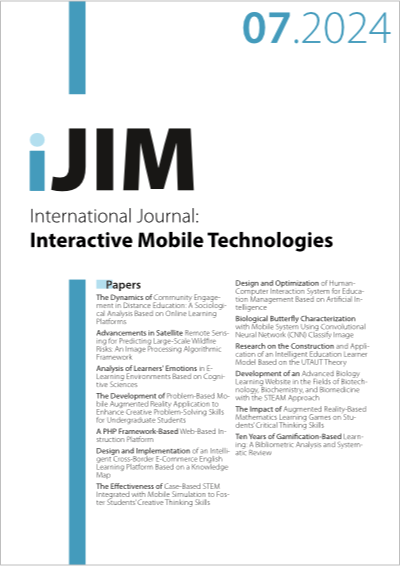Advancements in Satellite Remote Sensing for Predicting Large-Scale Wildfire Risks: An Image Processing Algorithmic Framework
DOI:
https://doi.org/10.3991/ijim.v18i07.48601Keywords:
wildfire risk prediction, satellite remote sensing, image processing algorithm, cloud detection, temporal information, deep learningAbstract
With the escalation of global warming and human activities, large-scale wildfires have become increasingly frequent, posing significant threats to both ecological environments and human societal safety. Satellite remote sensing technology plays a pivotal role in wildfire monitoring and risk assessment, providing extensive geographical coverage and continuous monitoring capabilities. Traditional methods for predicating wildfire risk, however, face limitations in processing large-scale remote sensing data, especially in cloud detection and temporal information analysis. In response to this challenge, a novel set of image processing algorithms has been developed to enhance the efficiency and accuracy of wildfire risk prediction. Initially, a cloud detection and removal algorithm based on deep learning is introduced. This algorithm effectively identifies and eliminates cloud interference in remote sensing images, thereby significantly improving the quality and usability of image data. Subsequently, a temporal information capturing technique is proposed, capable of processing vast amounts of remote sensing data and extracting time series features. This technique provides robust data support for wildfire risk prediction. The application of these technologies not only improves the efficiency of the data processing workflow but also enhances the timeliness and accuracy of the prediction model, holding significant practical importance for guiding actual wildfire prevention and response measures.
Downloads
Published
How to Cite
Issue
Section
License
Copyright (c) 2024 Nan Zhang (Submitter); Boxin Li, Hong’e Ren, Jing Tian

This work is licensed under a Creative Commons Attribution 4.0 International License.



